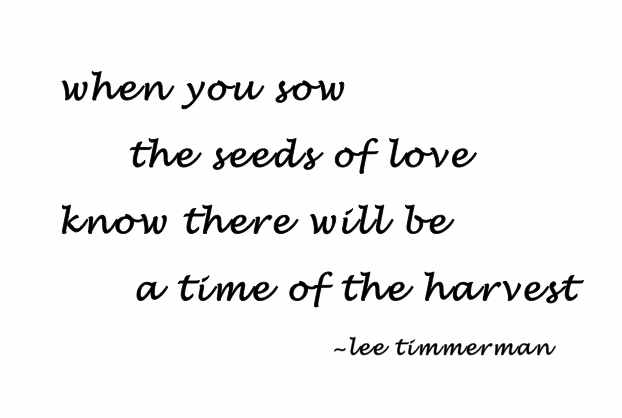Satyam, Shivam, Sundaram
In the beginning was the Word, and the Word was from God, of God, and is God. This means that in the beginning was Satyam in motion, or Shivam. Shivam was from God, of God, and is God. Through this Satyam in motion, the Holy Stream (Sundaram) is created. Around a small piece of Satyam, Shivam, Sundaram a tiny golden net is throw, and this is the creation of a unique Soul. To this unique Soul is given a Causal body, Astral body, and Physical body. This manifestation of the Word, all the way to the Physical creation and body, is also referred to as the Divine impulse, and is perfect. This Divine impulse is also referred to as the downward current of the creative force. The downward current starts with the Word (Christ/Krishna Consciousness) and manifests all the way down to the Physical creation. It is Om Satyam (pure Consciousness), Om Satyam in motion (referred to as Om Shivam), and Om Satyam with the mayac sheath (idea of separation or multiplicity, Om Sundaram).
The fourth chakra is the host of the Soul, and is symbolized by the Star of David, which is two intersecting triangles, with one pointing upward, and one pointing downward, representing the upward current and the downward current. The path of Tantra includes both of these currents as “from God, of God, and is God.” The downward flow is perfect, and the awareness of the harmoniousness of the upward flow is our awareness of the perfection of God (enlightenment). The exhalation of God is perfect, and the awareness of the Divine inhalation is Self Realization. Seeing both the perfection of the downward current and the upward current is God Realization.
It is very important to understand that although meditation is the first practice of Tantra, Tantra is inclusive of Meditation Yoga, Jnana Yoga, Bhakti Yoga, and Karma Yoga. Meditation is utilized to get to know the eternal Satyam, Shivam, Sundaram nature of God by calming down the body, mind, breath, and the ego. We calm down to experience the Astral, Causal, Soul, Holy Stream, the Christ/Krishna Consciousness, and ultimately surrender into the absolute pure Satyam Consciousness that always has been, is now, and forever shall be, realizing our oneness with God.
The path of Tantra is referred to as the path of ecstasy because the Tantric practitioners realize that both the downward current and the upward current are “from God, of God, and is God.” Tantra discerns that once the downward current reaches the fourth chakra and passes downward into the individual with the Soul, and the Casual, Astral, and Physical bodies, it now has the quality of duality and diversity, becoming the many faces of God.
The Soul was created by a tiny golden net being cast around a small piece of pure vibration of Satyam, Shivam, Sundaram. The Soul is pure Satyam, Shivam, Sundaram. The Soul begins to collect its experiences and memories, as the downward flow continues to manifest to the Causal, Astral, and Physical manifestations. The Soul then begins to move inward and ascend upward, transforming these desires and experiences into the fulfillment of its creation (dharma).
Swami Rama says there is room for everything on the spiritual path except the ego. However, the path of Tantra explains that there are two poles to the ego, the higher ego and the lower ego. The higher ego is the mechanism that helps the Soul fulfill its Divine purpose or dharma. We must understand that the higher ego is a realized state of Satyam, Shivam, Sundaram, and this state can only be realized by purifying and going beyond the self-centeredness of the lower ego.
In the path of Tantra we look for the triune nature of God first in meditation and then in our activities. The path of Tantra is about transforming our desires into a rajasic-to-sattvic manner, becoming identified with Satyam, Shivam, Sundaram, both on the inward journey and the outward journey, the rejoicing in God completely. Once we can reverse the downward current into the upward current and rise to the heart chakra in meditation, we can experience the pure Satyam, Shivam, Sundaram of our Soul. Then in our active life, we strive to come to the beauty and harmony of Satyam, Shivam, Sundaram in everything we see, think, or do. We are looking for what is beautiful, harmonious, and for that pure state of Satyam Consciousness.
Tantra promises the pleasures and enjoyment of the creation, while we are striving towards the bliss and ecstasy of liberation into the God Consciousness. To attain this state of joy, the path of Tantra focuses its discipline into looking for and experiencing the Satyam, Shivam, Sundaram essence of all life, beyond the ideas of incompleteness, and the self-centered lower ego.
The Tantric path is about the direct experience of Satyam, Shivam, Sundaram, and learning to see the Satyam, Shivam, Sundaram beauty, harmony, and love inour nature , and in our activities. Shiva and Shakti are ever in union, both the downward flow and the upward flow. One strives to see the beauty of the Divine impulse as Shiva manifesting into Shakti, and Shakti surrendering into Shiva. We strive to realize the manifestation of form is, at its essence, Satyam, Shivam, Sundaram, just like ice, water and vapor are all H²O. The Tantric aspirant strives to spend their days and nights in union with, and in appreciation of, the triune nature of God.
One of the disciplines of Tantra is to look for and feel a connection to life by developing an appreciation for life. However, we must understand that in order to feel connected, we must have some attachment, and we need to be careful not to become bound to this attachment or form, while still staying connected to the essence. The Tantric aspirant strives to be in love with the Satyam, Shivam, Sundaram essence, the triune nature of God, while appreciating the beauty of the form, without attachment to the form.
It is part of the Tantric philosophy to recognize that God is both eternal Consciousness as well as beautiful finite patterns of living energy. Shiva is the eternal Satyam Consciousness, which always has been, is now, and forever shall be. It is the only aspect of the Soul and God that is eternal. On the other hand, Shakti, starting with the Word, is the uniqueness, beauty, and transformation of the temporary, the acknowledgement of this dance of Divinity, of the unmanifested and manifested, and is what the path of Tantra strives to worship or practice.
With the path of Tantra, we learn to transform our karma and recreate our future by realizing that all life is from God, of God, and is God. What we look for (our intentions) in thought, word, and deed will make the difference in how our future will develop. The premise of the law of karma is that what you give to life, life will give more in return to you. In meditation, the revelation and insights of our Wholistic nature help us to have the vision for transforming our desires into a harmonious rajasic-to-sattvic pattern, which helps to lead the serpent energy from the muladhara chakra back up through the Astral, Causal, Soul, Holy Stream, Christ/Krishna Consciousness. The practice of seeking, experiencing, and therefore vibrating the Satyam, Shivam, Sundaram essence of life will then attract more Satyam, Shivam, Sundaram Consciousness into our life.
The path of Tantra, when practiced properly, provides not only worldly pleasure and the appreciation of the beauty of God in form, but also leads to the ultimate ecstasy of liberation into the God Consciousness of both form and formlessness, Shiva and Shakti ever in union.


